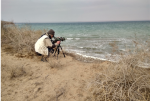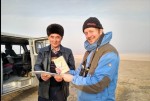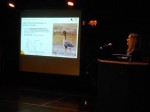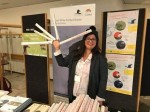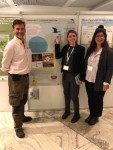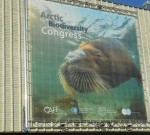Saving One of the World’s Most Threatened Geese – the Lesser White-fronted Goose
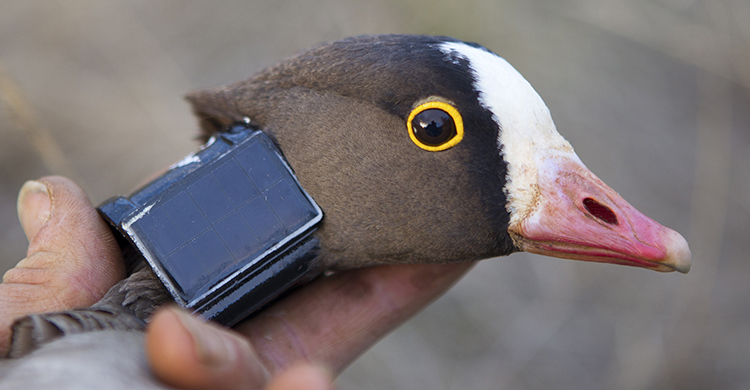
This autumn the Lesser White-fronted Goose community has been captivated by the migration of Mr. Blue from the staging area of the Fennoscandian population in northern Norway to their main wintering site at Lake Kerkini in Greece. Outfitted with a transmitter by the Norwegian Ornithological Society (BirdLife Norway), Mr. Blue has provided valuable data regarding ongoing changes in the migratory patterns of the population. © Tomas Aarvak/BirdLife Norway
Bonn, 26 November 2018 - The Lesser White-fronted Goose (Anser erythropus) is globally threatened and recognized as Vulnerable by the IUCN. Following decades of decline, the two populations covered by the African-Eurasian Migratory Waterbird Agreement are seemingly stable or even increasing. The current population estimates are 28,500-40,100 individuals and 100-130 individuals respectively for the Western main and Fennoscandian populations.
The species is, however, far from out of the woods yet, as illegal killing, habitat loss and degradation, climate change and gaps in knowledge continue to hamper conservation efforts. The small Fennoscandian population remains particularly vulnerable.
Conservation efforts for the species under the framework of AEWA are coordinated by the dedicated Lesser White-fronted Goose International Working Group on the basis of the International Single Species Action Plan adopted at the 4th Session of the Meeting of the Parties in 2008. Current activities are focused on delivering against the ambitious rolling workplan adopted at the 3rd Meeting of the Working Group in 2016. The workplan comes to an end in 2019. Support for activities as well as for the post of the Working Group Coordinator has generously been provided by the Norwegian Environment Agency and the Finnish Ministry of Environment as well as in the form of in-kind contributions made by a wide range of implementing partner organizations.
The conservation highlights in 2018 have included a Lesser White-fronted Goose monitoring expedition in Uzbekistan in January 2018, where a team of local and international researchers discovered small numbers of the species at two sites based on information from previous satellite-tracking data. A follow-up expedition to survey additional sites is taking place in early December 2018 organized by the Uzbekistan BirdLife partner, the Uzbekistan Society for the Protection of Birds, which designated the Lesser White-fronted Goose ‘Bird of the Year 2018’ in the country. This has included a widespread awareness-raising campaign amongst hunters, in particular.
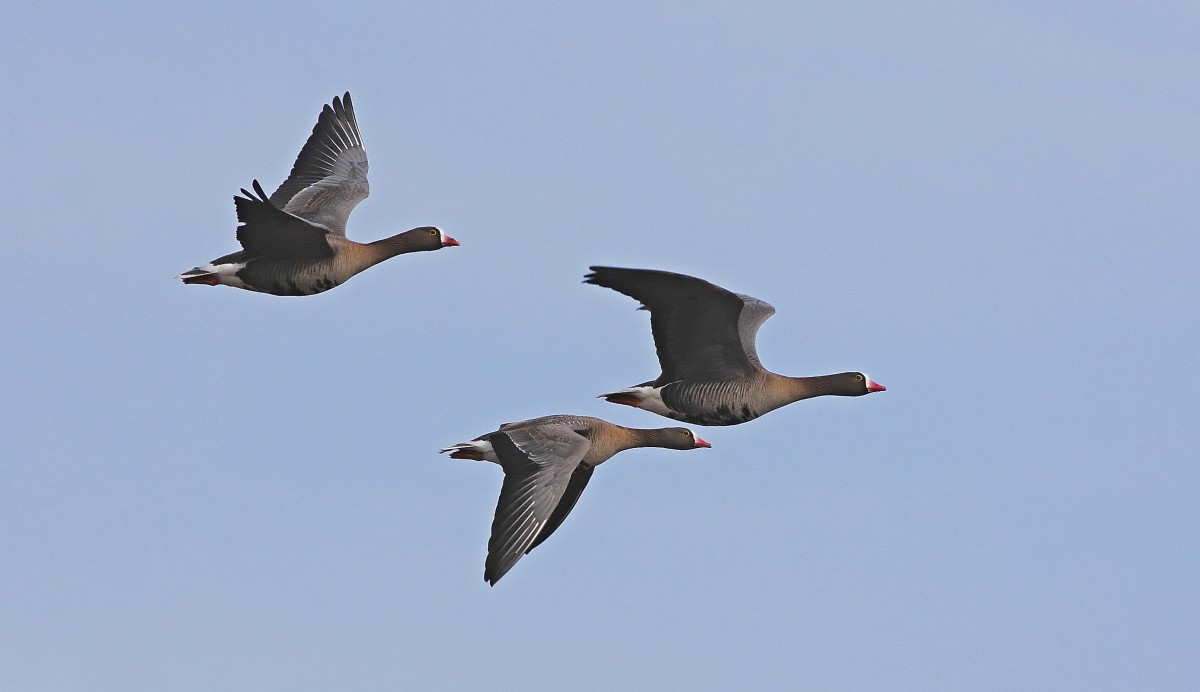
Satellite-tracking efforts headed by the Norwegian Ornithological Society in collaboration with Russian partners led to exciting new findings: the Lesser White-fronted Goose monitoring network eagerly followed the autumn migration of two individuals – Mr. Blue and Ms. Tough - tagged in northern Norway and Russia respectively. The migration of Mr. Blue, in particular, was astonishing as he led his family from the staging grounds in Norway down to the main wintering grounds of the Fennoscandian population at Lake Kerkini in northern Greece in a mere 72 hours. Overall, the Fennoscandian population had a fairly good breeding season (after the catastrophic breeding result in 2017), with a total of 104 individuals currently wintering at Lake Kerkini.
Other highlights include ongoing efforts to extend the Lesser White-fronted Goose environmental education programme carried out by the Hellenic Ornithological Society (HOS) to additional languages (English, Norwegian, Russian, Farsi) as well as adapting the materials available to the flyway of the western main population. HOS has also produced a new poster for the species under the theme “Conservation without Borders” featuring the species’ name in 15 languages for use by all partners.
The species was also featured extensively at the Arctic Biodiversity Congress in Rovaniemi, Finland held 9-12 October as a flagship example of how international cooperation can lead to the successful conservation of threatened migratory species. In addition, collaboration with the Arctic Migratory Bird Initiative (AMBI) and the biodiversity working group of the Arctic Council CAFF (Conservation of Arctic Flora and Fauna) has continued, spearheaded by the UNEP/AEWA Secretariat. The Secretariat has also continued efforts to link up to wider initiatives such as the Ramsar Regional Initiative for Central Asia.
The 4th Meeting of the International Working Group is scheduled to take place in the second half of 2019, funds permitting. In preparation, Range States will be expected to report on progress made against the workplan and the International Single Species Action Plan.
For more information, please contact the International Working Group Coordinator based at the UNEP/AEWA Secretariat, Ms. Nina Mikander.
Last updated on 29 November 2018



